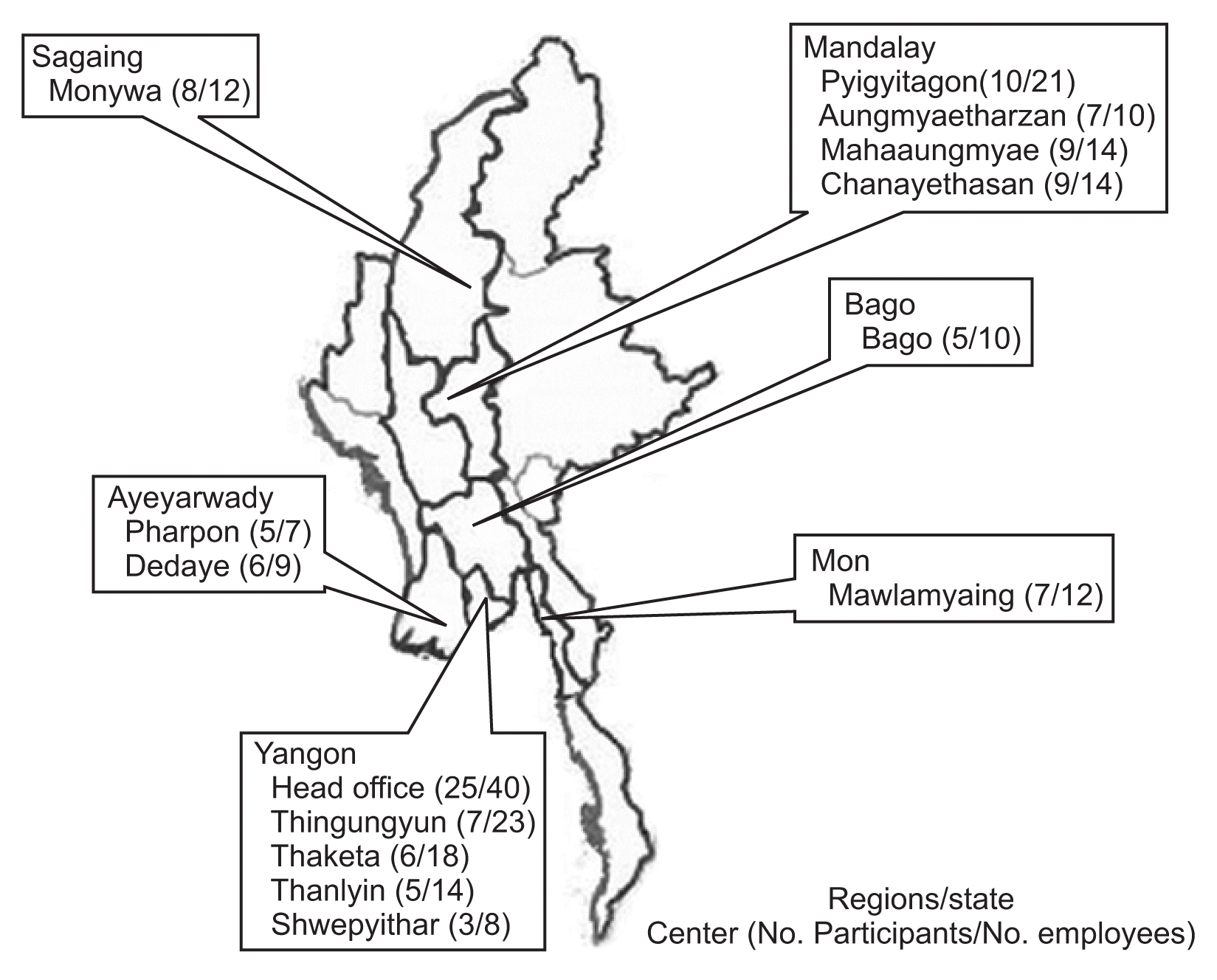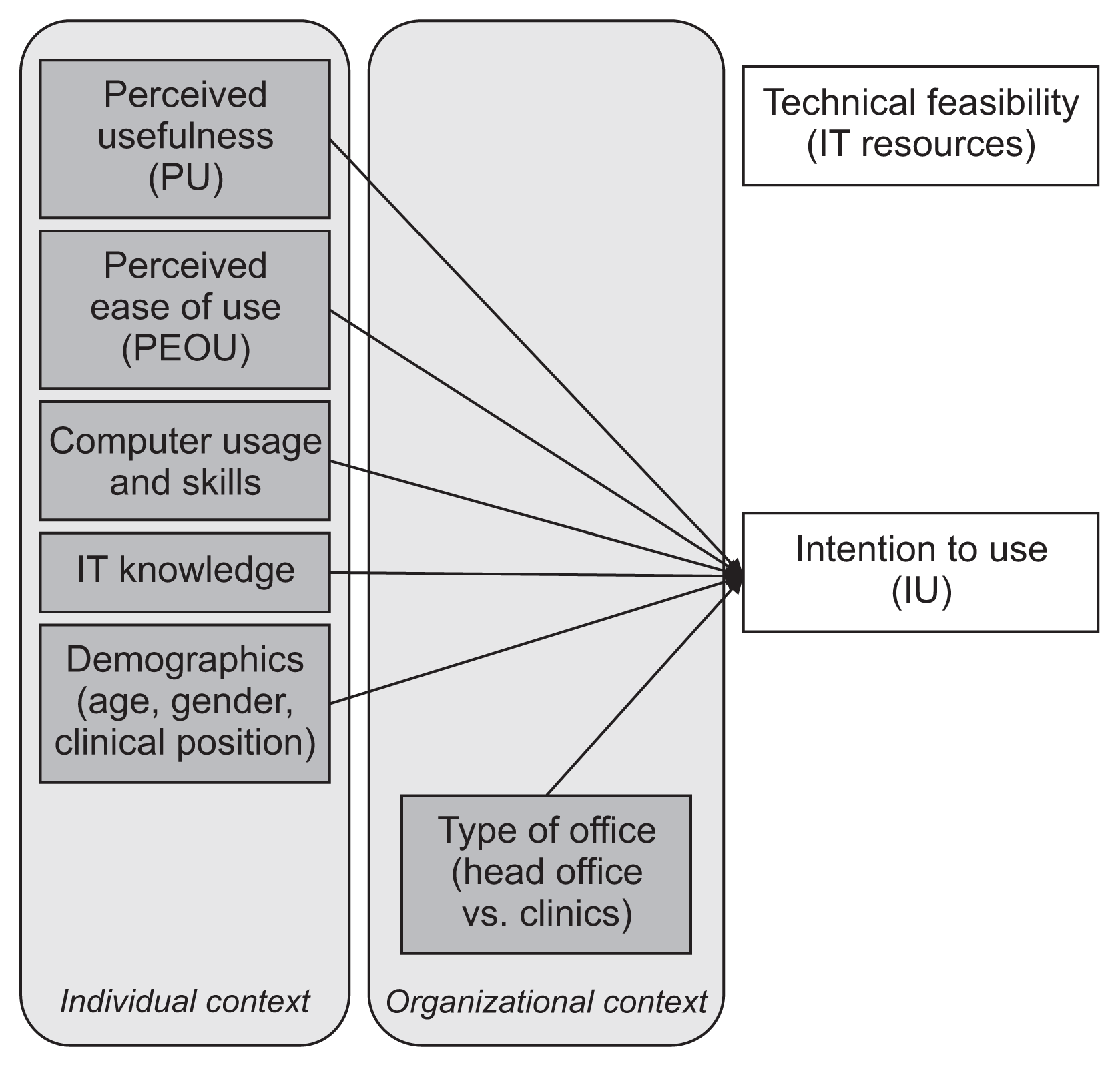1. Kruse CS, Kothman K, Anerobi K, Abanaka L. Adoption factors of the electronic health record: a systematic review. JMIR Med Inform. 2016; 4(2):e19.

2. Organisation for Economic Cooperation and Development. Health at a Glance: Europe 2018: State of Health in the EU Cycle. Paris, France: Organisation for Economic Cooperation and Development;2018.
3. Hoyt RE, Sutton M, Yoshihashi A. Medical informatics: practical guide for the healthcare professional. Pensacola (FL): University of West Florida;2009.
4. Aldosari B. Patients’ safety in the era of EMR/EHR automation. Informatics in Medicine Unlocked. 2017; 9:230–3.

5. Cook-Moine C, Cramer L. Financial savings from an electronic medical record in a small group practice. Chicago (IL): Healthcare Information and Management Systems Society Inc;2018.
6. Alpert JS. The electronic medical record in 2016: Advantages and disadvantages. Digit Med. 2016; 2(2):48–51.

7. Evans RS. Electronic health records: then, now, and in the future. Yearb Med Inform. 2016; Suppl 1(Suppl 1):S48–61.

8. Kruse CS, Kristof C, Jones B, Mitchell E, Martinez A. Barriers to electronic health record adoption: a systematic literature review. J Med Syst. 2016; 40(12):252.

9. Thit WM, Kaewkungwal J, Soonthornworasiri N, Theera-Ampornpunt N, Kijsanayotin B, Lawpoolsri S, et al. Electronic medical records in Myanmar: user perceptions at Marie Stopes International Clinics in Myanmar. Southeast Asian J Trop Med Public Health. 2016; 47(4):799–809.
10. Watkinson-Powell A, Lee A. Benefits of an electronic medical records system in rural Nepal. JNMA J Nepal Med Assoc. 2012; 52(188):196–200.

12. Kijsanayotin B, Speedie S. Are health centers in Thailand ready for health information technology? A national survey. AMIA Annu Symp Proc. 2006; 2006:424–8.
13. Davis FD. Perceived usefulness, perceived ease of use, and user acceptance of information technology. MIS Q. 1989; 13(3):319–340.

14. Htun KS. An investigation of ICT development in Myanmar. Electron J Inf Syst Dev Ctries. 2019; 85(2):e12068.

15. Lewis T, Synowiec C, Lagomarsino G, Schweitzer J. E-health in low- and middle-income countries: findings from the Center for Health Market Innovations. Bull World Health Organ. 2012; 90(5):332–40.

16. Ayaad O, Alloubani A, ALhajaa EA, Farhan M, Abuseif S, Al Hroub A, et al. The role of electronic medical records in improving the quality of health care services: Comparative study. Int J Med Inform. 2019; 127:63–7.

17. Gidwani R, Nguyen C, Kofoed A, Carragee C, Rydel T, Nelligan I, et al. Impact of scribes on physician satisfaction, patient satisfaction, and charting efficiency: a randomized controlled trial. Ann Fam Med. 2017; 15(5):427–33.

18. Thu SW, Kijsanayotin B, Kaewkungwal J, Soonthornworasiri N, Pan-Ngum W. Satisfaction with paper-based dental records and perception of electronic dental records among dental professionals in Myanmar. Healthc Inform Res. 2017; 23(4):304–13.

19. van der Zande MM, Gorter RC, Aartman IH, Wismeijer D. Adoption and use of digital technologies among general dental practitioners in the Netherlands. PLoS One. 2015; 10(3):e0120725.

20. Afrizal SH, Hidayanto AN, Handayani PW, Budiharsana M, Eryando T. Narrative review for exploring barriers to readiness of electronic health record implementation in primary health care. Healthc Inform Res. 2019; 25(3):141–52.

21. Muinga N, Magare S, Monda J, English M, Fraser H, Powell J, et al. Digital health systems in Kenyan Public Hospitals: a mixed-methods survey. BMC Med Inform Decis Mak. 2020; 20(1):2.

22. San AN, Yee CJ. The modified technology acceptance model for private clinical physicians: a case study in Malaysia, Penang. Int J Acad Res Bus Soc Sci. 2013; 3(2):380–403.
23. Dünnebeil S, Sunyaev A, Blohm I, Leimeister JM, Krcmar H. Determinants of physicians’ technology acceptance for e-health in ambulatory care. Int J Med Inform. 2012; 81(11):746–60.

24. Aggelidis VP, Chatzoglou PD. Using a modified technology acceptance model in hospitals. Int J Med Inform. 2009; 78(2):115–26.

25. Lorenzi NM, Riley RT. Organizational issues = change. Int J Med Inform. 2003; 69(2–3):197–203.
26. Bevan A, Patel N. An electronic prescription alerting system-improving the discharge medicines process. Arch Dis Child. 2016; 101(9):e2.





 PDF
PDF Citation
Citation Print
Print





 XML Download
XML Download